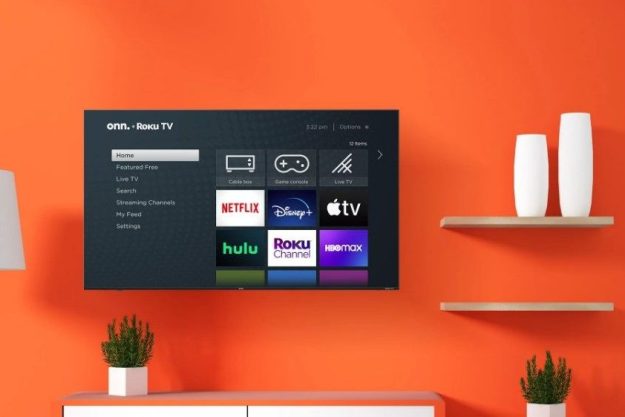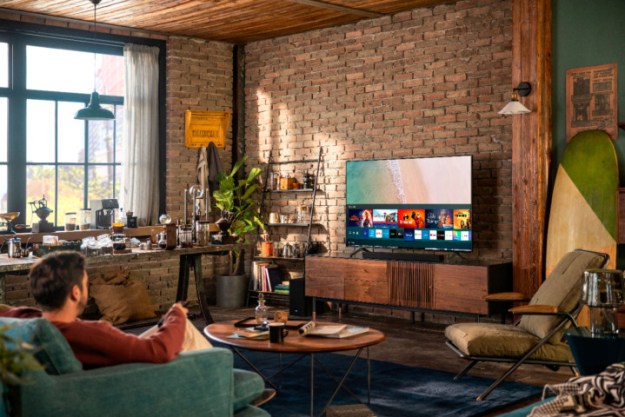A few days ago, I bought and reviewed one of Apple’s brand new, ultra-popular Apple TV entertainment systems. I wrote an exhaustive nine page review (yes, 9 pages!) and found plenty of positive things to say about theApple TV. I also made sure to point out the negatives so as to not give a biased or intentionally one-sided report.
There were two major issues I had with the Apple TV when I first tested it. The primary issue is the somewhat disappointing picture quality when using HDMI cables. This wasprobably the most baffling because HDMI is considered superior to component cables; component cables being the only other way to connect your Apple TV to a television. After replacingthe first Apple TV with a new unit from the same Apple store, the problem with sub-par HDMI image quality simply disappeared. With my first Apple TV, there was visible ghosting of images and someslight color banding that looked more like VHS playback than high-quality digital signal. Now, the HDMI connection is absolutely brilliant. Blacks are stunningly black (not even the slightest hint ofgrey) and colors are vibrant. No ghosting, no color banding… just a crisp, clean, awesome picture and perfect digital audio.
Apple TV May Really Be Apple’s "Hottest" Product
The second issue I had was the heat generated by the little box. With my first Apple TV, I measured temps ranging from 95F to 105F when resting, and around 110F when the Apple TV wasplaying movies off its internal hard drive.
I was not the only one who commented that the Apple TV felt like it was burning up inside. Several reputable podcasters and numerous members of Apple’s support forums posted about high temps.
After I set up the replacement Apple TV, I noticed that it ran a little cooler at first, but this was prior to syncing my iTunes music & video library. Once the Apple TV had properlysynced with iTunes, the temps started to rise. I began playing a few episodes of Lost and the temps felt like they were increasing gradually. After playing 20 minutes of The LastSamurai, the Apple TV felt just as hot as the first unit I had purchased.
I thought it would help to have some thermal images of the Apple TV in use and at rest. To give a frame of reference, I placed the AppleTV next to my MacBook Pro and a LaCie "mini" external hard drive. I kept my hand in each of the photos for another point ofreference – body heat. (In one of the images, I had been holding a cup of coffee, so my hand looks little hotter than normal.)
Apple TV After Boot Up
Apple TV after playing for 30 minutes
Apple TV vertical after playing movie
Apple TV in sleep mode after 15 minutes
Apple TV after being in sleep mode for 30 minutes
Apple TV after being turned off for 10 minutes
Apple TV cooled with hand print
You can clearly see from the images that the Apple TV is much hotter than the MacBook Pro, even with it playing a movie with full screen brightness AND while transferring data from the LaCiedrive.
Average Temperatures
The Apple TV averaged 40.15C (104.27F) when playing content from its hard drive, and averaged 36.58C (97.8F) when in sleep mode. The highest temp recorded while playing content was 44.27C (111.68F).Ambient room temperature, airflow near the Apple TV and even room lighting have slight effects on the running temps.
Important Note
To echo my first review, be sure to keep the Apple TV in a well ventilated area and please, please do not set anything on top of theApple TV whether it’s in sleep mode or in full operation. The thermal insulation of another object on top of it could prove damaging.
Conclusion
I was surprised to see such a vast difference in heat signature between the Apple TV and the MacBook Pro. I didn’t expect the results to be quite as dramatic as they were.
I was also very surprised by the fact that my first Apple TV rendered mediocre quality video with HDMI, whereas the replacement unit rendered beautiful, almost flawless HDMI video. The two Apple TVunits were probably produced in the same factory at the very same time. But again, the differences are clear.
The Apple TV is probably too new in the hands of the general public for Apple to have been made aware of the fact that some consumer units are running hot. It’s also possible that the number of hotunits are limited.
Knowing Apple’s commitment to excellent customer service, it seems inevitable that if enough confirmed and valid cases are reported to Apple Support, then a cooling solution –if necessary – will be presented.
Of course, Apple could also explain that without an external fan the Apple TV natively runs a bit hotter and the temps that I (and others) have recorded are perfectly within spec.
Despite the surprising heat signatures produced by the Apple TV, I am blown away by the improvement in HDMI video. Now that my Apple TVis behaving more like it was intended, I find myself increasingly happy with it.
Editors' Recommendations
- How much is Apple TV+?
- Best Amazon TV deals: Cheap TVs under $100
- Samsung’s stunning ‘Frame’ QLED TV is up to $1,402 off
- Best AirPods Pro deals: Get Apple’s flagship earbuds for $122
- Tubi teams with DAZN for sports as free TV service continues its takeover









